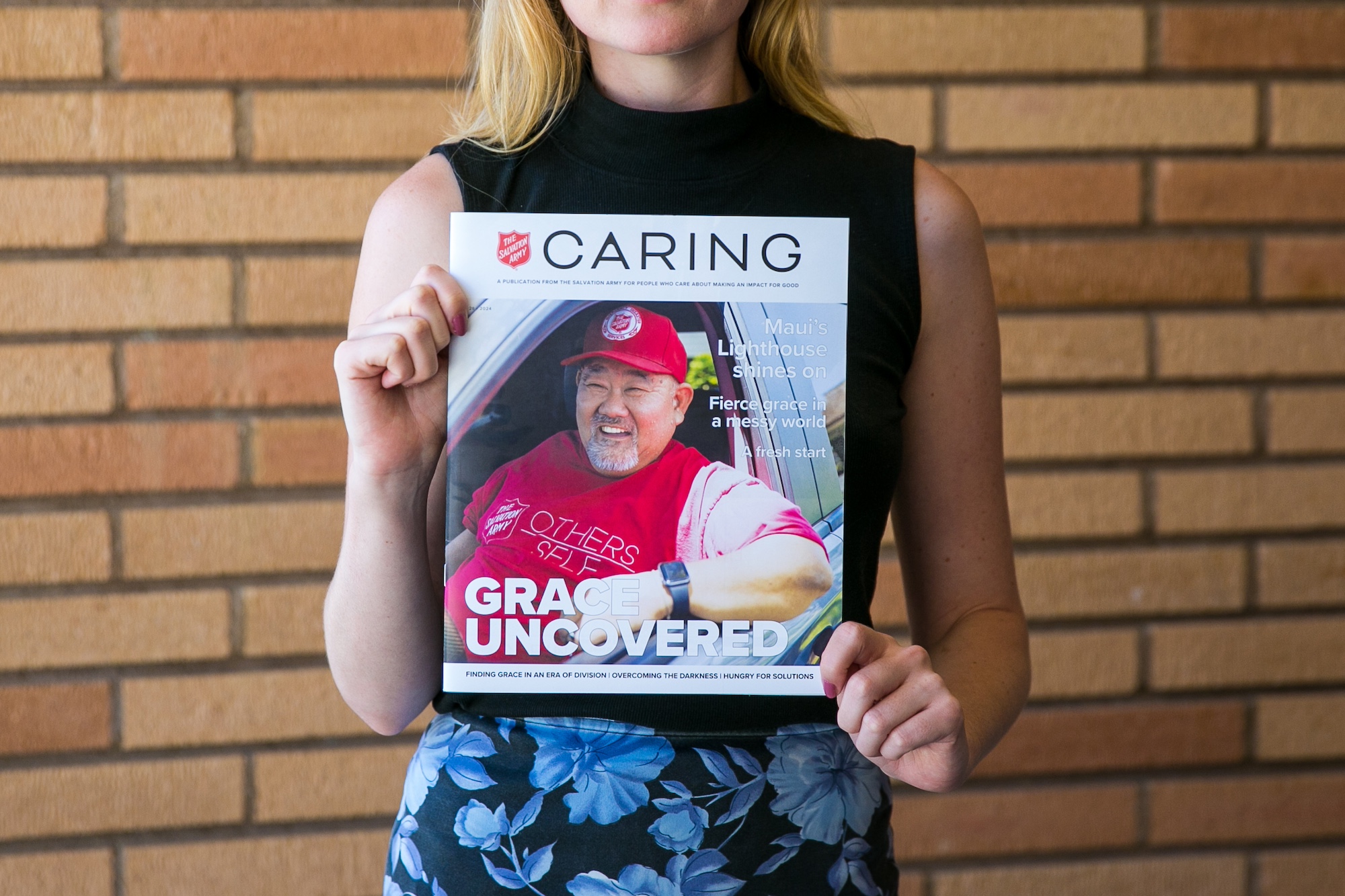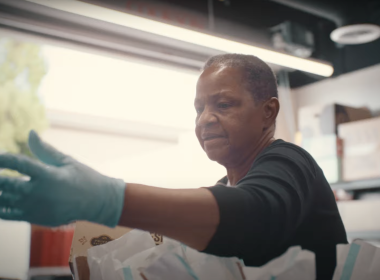Life on Ebeye Island, a remote island in the already-remote Republic of the Marshall Islands, is difficult. Some 16,000 people are crammed into one-eighth of a square mile.
Envoys Rudy and Ella Jabuwe, who lead The Salvation Army here, are sometimes forced to use their own limited funds to help feed hungry children whose families are too poor to afford food. But they serve with joy. The love of God is immediately apparent in Rudy and Ella’s lives, and they showcase his grace with every act of generosity.
Watch the video to learn about the often-desperate situation on Ebeye, and how Rudy, Ella and their team are working to help the people living there.
Below is a transcript of the video edited for readability.
Major Steven Ball, Marshall Islands Coordinator: Life in the Marshall Islands is day by day. You start out early and you work, work, work to make basic things that we might zap in the microwave.
Ebeye is part of the Kwajalein Atoll, about 80 acres, and there’s about 16,000 people that live there. They stay there and congregate there in a way, because they have the ability to work at the military base that’s a ferry boat ride away. It’s so packed in and so concrete, there’s very little vegetation. There’s a few trees here and there, and other than that, it’s just concrete and dirt and coral.
The officers there, Ella and Rudy Jabuwe, are working in a very desperate situation. They are committed, faithful and very effective leaders there.
Envoy Ella Jabuwe, Ebeye Corps Officer: Houses here, they’re really close to each other. Sometimes you can just open your window and the neighbor [will open their] window, and [it’s like,] “Hi! Goodnight!” We have power outages here every four hours.
Envoy Rudy Jabuwe, Ebeye Corps Officer: Four on, four off. On and off, on and off, on and off.
Ella Jabuwe: We run out of things all the time. One time, we ran out of medicine. And even our son was coughing for a long time because there was no coughing medicine for children, or Tylenol. In the store they run out of food, so we ask our families back home to send on boat what we need. In church or in programs, the kids come hungry. And you can tell because they won’t answer, or they just lean back. Sometimes we have to use our own money to buy food for them. At night time, we notice that they don’t want to go home.They have family–
Rudy Jabuwe:–but they don’t have enough money.
Ella Jabuwe: Because in a family there might be twenty people in one house. And sometimes, only two or three people work in the household.
Rudy Jabuwe: There are many folks who don’t know Christ and we need to demonstrate great love for them to see Christ in us.
Major Nancy Ball, Marshall Islands Coordinator: Ella has shared with me how one of their girls came to her needing help on a homework assignment. The next day she brought her sister and a little friend because they had homework they needed help with. And then she had 15 kids in their 10’ by 10’ living room / classroom / office.
Steven Ball: They’ll have 70 or more people on a Sunday. Their corps and their home is really the same building, so it’s very challenging. But they do it with a very joyful spirit, I mean an amazing commitment to serve. In Ebeye this year, the youth went to a place called ‘Dump Town,” which is just some place right close to the dump and did an outdoor Sunday school with the people of that little area of the island. And the youth of the corps enjoyed that experience so much that they’re going every week.
Marygrace Mike, Ebeye Corps: ‘Dump Town’ is where our trash and garbage goes to.
Ella Jabuwe: They just make a wall and there’s the dump right there. Over there people don’t have much. Not a lot of people work from there.
Marygrace Mike: We go there every saturday.
Romeo Mike, Ebeye Corps: The goal is to teach those kids to share everything and to bring their family.
Marygrace Mike: We’ll just sing some songs, play games, do the devotions, and we feed them.
Nancy Ball: I think that a lot of times in America, the slightest inconvenience becomes a huge barrier to us. Sometimes we’ll say, “Well the copier isn’t working, so I can’t do Sunday school because I couldn’t print the material.” And here we have people who are faithfully serving those children because they want to invest in their lives and to teach them how to grow and understand God’s word. Giving is just a part of their life. Out of the little they have, they share it freely.
Ella Jabuwe: I want to do this because I love the people. I love the Lord. And I might not have much, but we hope that we can do more for the people.
Do Good:
- See more videos like this in our video feed.
- Have you ever found yourself wanting to volunteer but unsure of what to do or how to go about it? Here’s the key: You can make an impact in the Fight for Good with whatever time and skills you have. Whatever your interest, there is a you-sized need for goodness in the world. Get the guide on How To Be An Impactful Volunteer with 9 habits to make a difference when giving back.
- Did you know The Salvation Army served more than 23 million Americans last year fighting hunger, homelessness, substance abuse and more—all in a fight for good? Where can you help? Take our quiz to find your cause and learn how you can join in today.












